First Skill-Based Slot Machines in Las Vegas Debut, Here’s the Low-Down
Skill-based slot machines, the subject of much buzz and speculation over the last couple of years, have officially arrived in a Las Vegas casino.
The first skill-based slot machines in Las Vegas can now be played at Planet Hollywood, and we’ve got all the details about what casinos are hoping will help deal with “The Millennial Problem.”
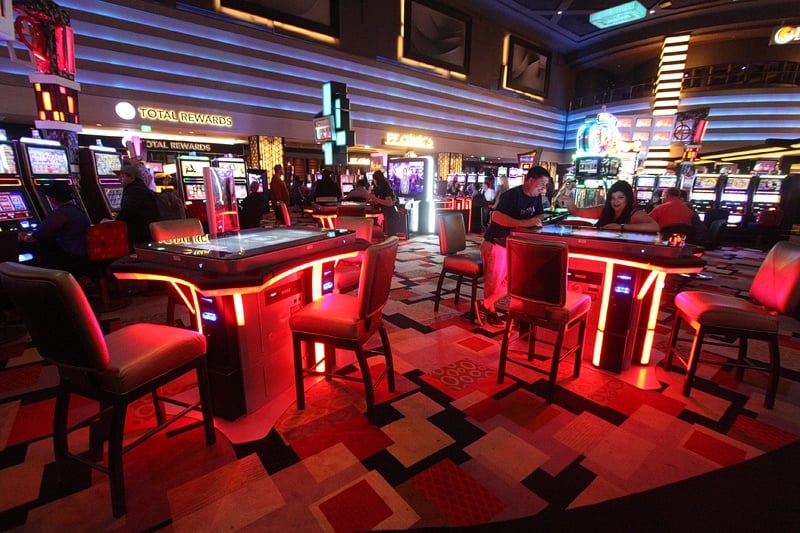
The Millennial Problem, of course, is the belief on the part of casinos and slot machine makers that traditional slots are “losing their luster,” especially with younger customers, specifically, millennials. While the number of millennials visiting Las Vegas is going up (roughly 34 percent of the city’s 43 million visitors in 2016 were millennials, an increase of 24 percent since 2015), casinos cite a decline in slot machine play as evidence millennials raised on video games don’t find traditional slot machines compelling.
There’s some debate about whether The Millennial Problem actually exists, but damn it, casinos are out to solve it whether it exists or not. That’s where skill-based slot machines enter the picture.
Why, look, here’s one now. This is one of three skill-based slot machines at Planet Hollywood.
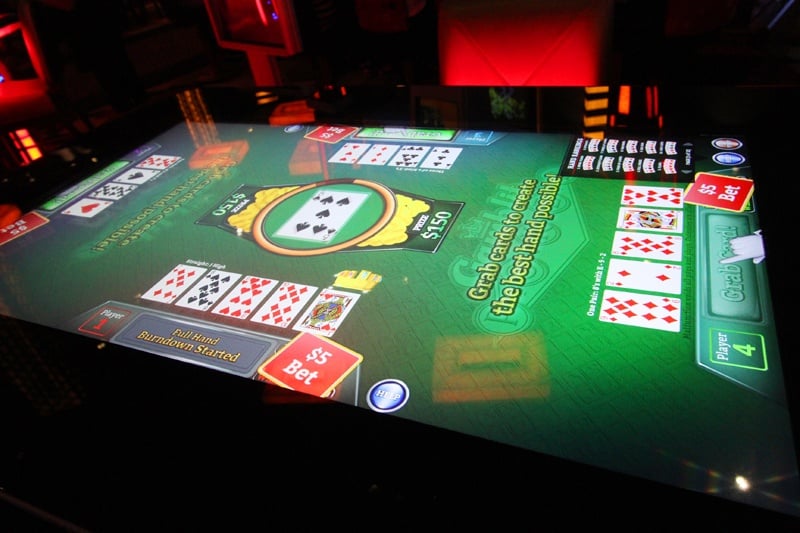
Of the three games being tested on the casino floor at Planet Hollywood (the machines have to pass a field trial before regulatory approval can be granted), two are Gamblit Poker and the third is a game called Cannonbeard’s Treasure.
The first distinctive thing you notice about these skill-based games is you can’t play with yourself. Yes, we know how that sounds, we are a snark-based Las Vegas blog.
The machines can accommodate up to four players each, but not individual players.
It should be noted the machines currently won’t take loyalty club cards, in case you’re into that kind of thing.
Here’s how they work.
Gamblit Poker is a variation of (wait for it) poker. Players “grab” cards from a common pool of cards, building a hand of five cards. The player with the best hand wins the jackpot, the amount of which is determined by the machine.
Cannonbeard’s Treasure is a variation of blackjack. Players, again, grab cards from a pool of cards. The cards are added up, and the player whose card total is closest to the target number (without going over) wins the pot.
Here’s a look at how the simulated game play looks on the machines, courtesy of us risking our neck to get video of how the simulated game play looks on these machines.
A key element of skill-based machines, and what differentiates them from traditional slot machines, is customers aren’t playing against the machine (or a dealer), they’re playing against each other. The outcome is based upon skill, rather than chance alone.
Mind, meet blown.
So, let’s dig a bit deeper into the pros and cons of Gamblit Poker and Cannonbeard’s Treasure.
First, a big pro of these games is the low price to play. There’s a $2 Gamblit Poker and Cannonbeard’s Treasure is also $2. There’s also a $5 Gamblit Poker.
Second, the competitive and social aspects of skill-based games are undeniable. Traditional slot machines are solitary endeavors. With skill-based games, you can hang out with friends and do your best to relieve them of their hard-earned cash.
Observing people play skill-based slots, it’s easy to see how one’s competitive instincts can kick in, keeping players engaged and playing longer than they might otherwise.
Interactivity certainly does seem to be more appealing than staring blankly at a screen while repeatedly hitting a button.
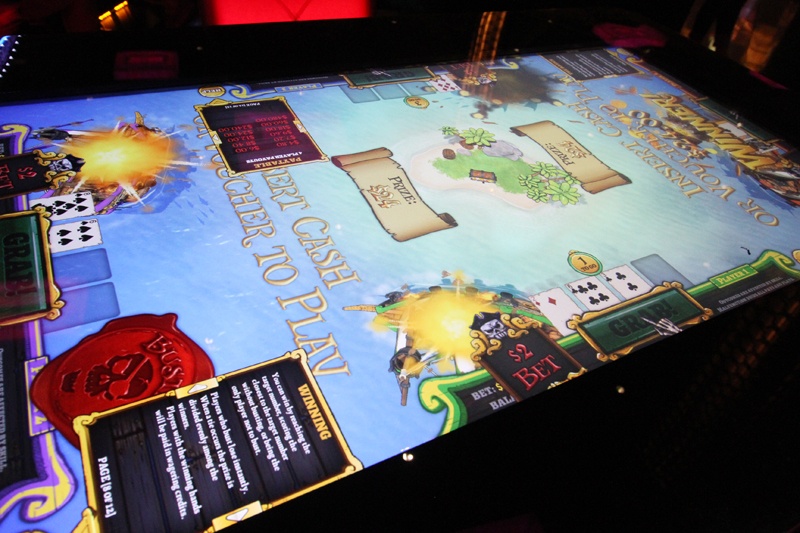
The biggest twist in this whole story, though, is millennials aren’t actually the ones playing skill-based games, at least not the ones at Planet Hollywood. Millennials are curious about the machines, but they’re hit-and-run looky-loos, rarely playing more than $20 a pop.
Truth be told, we didn’t see a ton of play on these machines at all. But when people played, they weren’t millennials. Who’s playing skill-based slots? Slot players. That’s right, older players who already enjoy slot machines. A representative of Gamblit confirmed millennials aren’t the majority of those playing skill-based slots.
That ought to give casino operators more than a few restless nights.
While play on the machines appears light, there’s obviously going to be a period when awareness of the games has to be raised. At Planet Hollywood, a small sign tells customers they can actually gamble on these tables. Most would mistake them for similar interactive, touchscreen tables like those in several Las Vegas lounges like Ignite at Monte Carlo, Encore Players Lounge at Wynn and iBar Ultra Lounge at Rio.
The new games are simply lost among the crop of current slot machines, many with massive vertical screens.
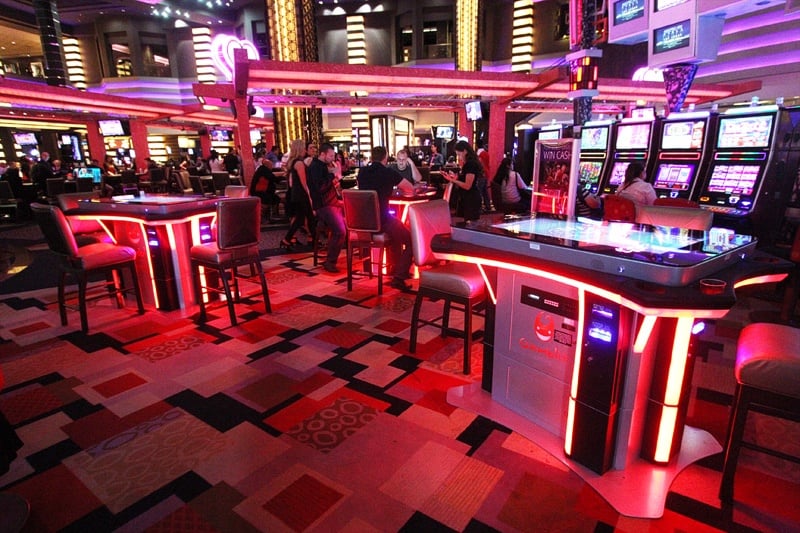
Those who did play the games seemed to spend a lot of time just sitting and drinking and talking. Which is great if you’re trying to increase revenue from drinks, but not so much if you’re trying to make money from gambling. At a table game, dealers and other players keep the pressure on to make more bets. The social aspect of skill-based games actually distracts from the gambling.
A critical downside to these games, though, has to do with perceived value.
As players make bets, the machine serves up the amount of the jackpot they’re trying to win. In the vast majority of cases, the jackpot is less than the players are contributing.
For example, we saw a couple sit down to play Gamblit Poker. They each bet $5, for a total contribution of $10. The jackpot was $7.50. They had fun playing, but the next pot was the same, ditto the one after that. It didn’t take the couple long to realize they were getting dinged a $2.50 “rake” with each passing hand.
The rake accumulates, similar to the jackpots in progressive machines. Part of the rake goes to the machine manufacturer, and the manufacturer has a revenue sharing agreement with the casino. We’ve yet to see any published information about the house edge for these games.
While the potential for larger jackpots is there (the max jackpot on the $5 machine is $1,200, $480 on the $2 machine), the couple cashed out and dashed. A Gamblit rep says the biggest jackpots happen several times each hour, but the perception problem means many players won’t be sticking around that long.
Presumably, though, the more play the machine gets, the more frequently the larger jackpots (considerably more than what the players are betting at any time) will hit.
There are some other peculiar aspects to these skill-based games.
For starters, we were told there will always be an attendant with the games. Why? Because they have to monitor the play to avoid collusion and bullying. We were told there’s the potential for experienced players, or teams, to take advantage of novice players. Essentially, there’s room for cheating.
A smaller annoyance, but one that’s undeniable, is the table surfaces require constant cleaning. Nobody wants to touch a screen that has hand smudges all over it, so attendants have to continually spritz and wipe the screens. High maintenance is right.
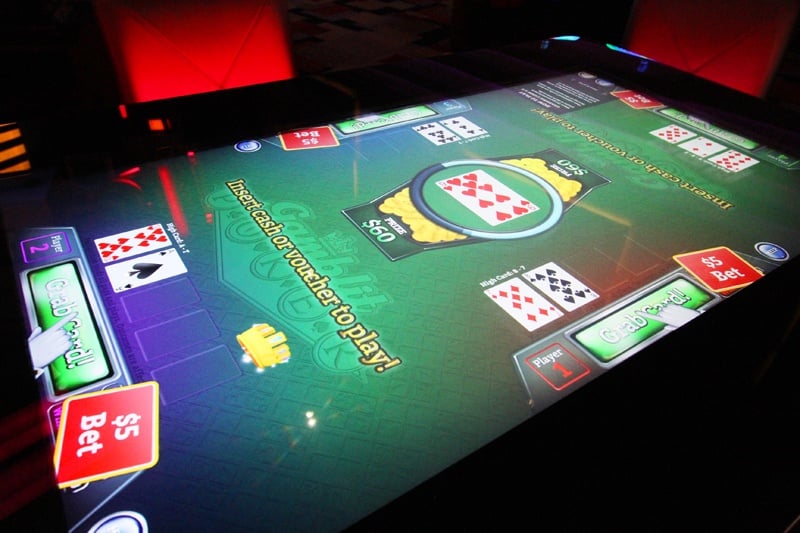
Overall, these new skill-based slot machines are a great conversation piece, and any “first” is a great PR opportunity.
It’s premature to say, though, skill-based slot machines are going to halt or reverse the decline of slot revenue trends. In fact, we’re going to venture they’ll have little or no effect on those numbers. Oh, yeah, we’re putting our naysaying right out there.
Gamblit officials have said they’re happy with the early results of their field test, but honestly, what would you expect them to say?
Here’s the bottom line, and it’s something you won’t hear often.
The fact is millennials are smarter than previous generations.
Millennials know more about gambling than their parents or grandparents ever did.
They know casinos have been gradually increasing the house edge for 20 years, and what millennials aren’t particularly interested in is being screwed. Shocker.
Millennials aren’t a thing, they’re people. People who happen to be technologically adept. People who value experiences. They’re people who know when the deck is stacked against them, and know when they’re being squeezed. They want value for their entertainment dollars, just like the rest of us.
Here’s how you solve The Millennial Problem. Lower the rake. Lower the minimums. Bring comped drinks more frequently. Let people take photos in the casino to share with friends.
The Millennial Problem isn’t a slot machine problem or a disposable income problem. It’s a perceived value problem.
And here’s hoping casinos are listening, because giving customers, young and old, better value and remarkable experiences is the solution. All due respect, Cannonbeard.





Leave your thoughts on “First Skill-Based Slot Machines in Las Vegas Debut, Here’s the Low-Down”
21 Comments